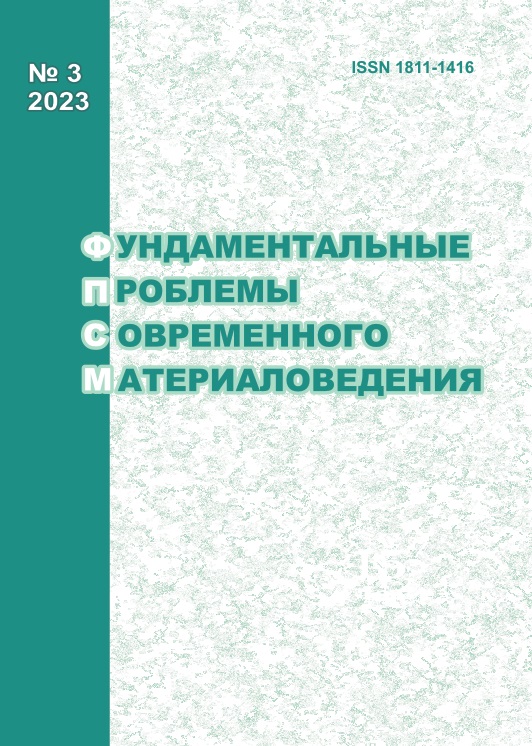EVOLUTION OF THE STRUCTURE OF Ti+Al POWDER MIXTURE DURING MECHANICAL ACTIVATION
10.25712/ASTU.1811-1416.2023.03.006
Keywords:
mechanical activation, planetary mill, mechanocomposite, microstructure, dispersion analysis, X-ray diffraction analysisAbstract
In the work presented, the evolution of the structure of a mechanically activated powder mixture of Ti + Al composition was studied for the duration of the activation process of 3, 10, 17 min. The AGO-2 planetary ball mill with two vials was used as an activator. The volume of each vial was 160 cm3, the diameter of the balls was 8 mm, the mass of the powder in each cylinder was 10 g, and the mass of the balls was 200 g. The centrifugal acceleration of the cylinders was 400 ms-2 (40 g). Studies of the microstructure of activated mixtures were carried out using a scanning electron microscope SEM S-3400N Hitachi Science Systems Ltd based on the HyperMAP module of the original software. The activated mixtures were analyzed on DRON-6 diffractometer with CuK radiation (λ=1.5418 Å). The scanning step was 0.05°, the exposure time was 3 s. During the analysis of microstructures, it was revealed that the activated mixture is characterized by a structural element representing a plastic matrix of aluminum with embedded titanium particles (mechanocomposite). For each time interval of mechanical activation, a dispersion analysis of the activated powder mixture was carried out in order to construct distribution histograms both in terms of the particle size of the mechanocomposite and in terms of the size of titanium particles distributed in the volume of the matrix. It was established that at the first stage of activation, an increase in the size of mechanocomposites is observed, at the second stage, the grinding process dominates, which is associated with the competition between the processes of destruction and agglomeration. The size of titanium particles in the matrix decreases monotonically in this case. An analysis of the diffraction patterns of the process made it possible to establish that the main changes in the structure of the crystal lattice of the grinding components occur at the early stages of the mechanical activation process, while compounds based on titanium and aluminum were not found for all activation times.











 Journal «Fundamental’nye problemy sovremennogo materialovedenia / Basic Problems of Material Science»
Journal «Fundamental’nye problemy sovremennogo materialovedenia / Basic Problems of Material Science» This work is licensed under a
This work is licensed under a 
